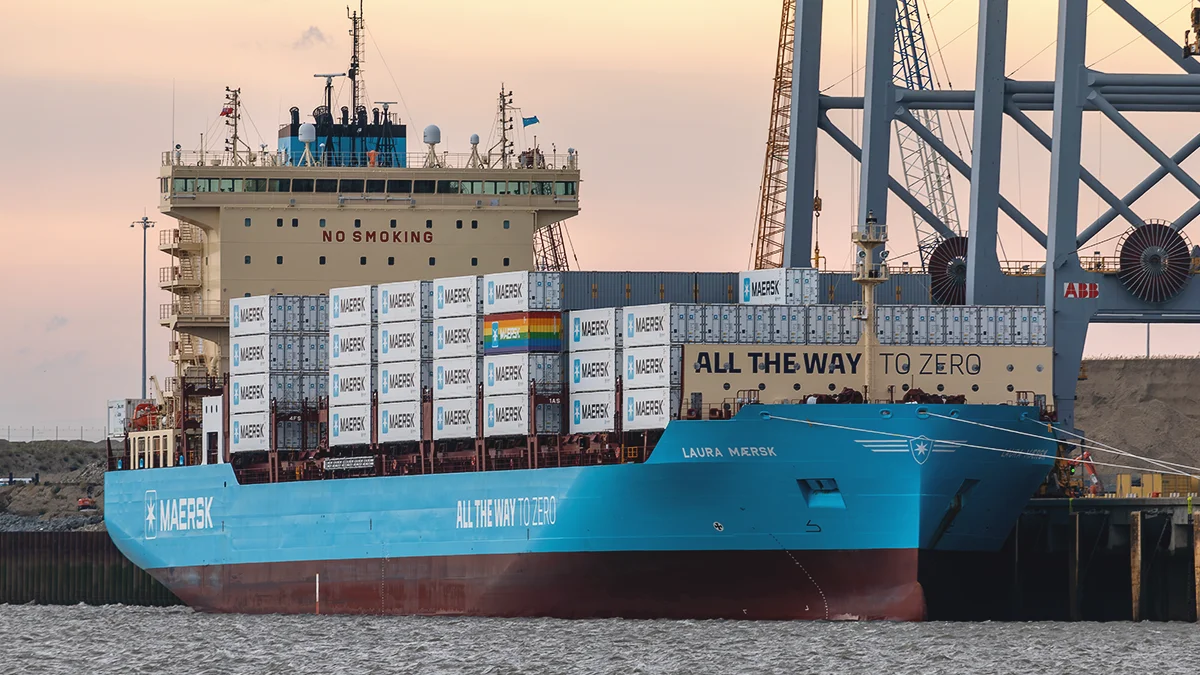The marine industry’s interest in using alternative fuels is accelerating, with the number of ships capable of using these fuels growing by 18% in 2024, according to Lloyd’s Register, a maritime classification company. Yet the newness of the technology means that companies and insurers are still struggling to manage the risks.
Data from Lloyd’s Register also suggests that last year shipowners ordered around 600 vessels capable of using alternative fuels, bringing the total size of the global order book to 1,737 vessels. Combined with in-service vessels, the total size of the alternative fuel fleet now stands at 3,597, representing 4.8% of all vessels in service and on order.
Under development
However, widespread fear over the myriad of risks that alternative fuel presents is stopping some firms from fully embracing its potential.
For one thing, no single alternative fuel dominates the shipping industry at the moment. Liquefied natural gas (LNG) remains the most popular choice, used by 6.7% of alternative fuel vessels in operation and 36% of tonnage on the new order book, according to the DNV Energy Transition Outlook. But other sources, including petroleum gas (LPG) and methanol, are proving popular as well. There are some early pilot projects in liquefied hydrogen and ammonia taking place, too. Battery cells, both as a standalone power source and as part of a hybrid power source, continue to win devotees.

Bryan Peh
Marine Risk Consultant at AXA XLAnother challenge is that many of these technologies are still under development, requiring more work to properly validate them. The risk of installing them onto a ship is not fully understood, and in many cases the historical data on the likelihood that something will go wrong is not available.
Furthermore, many of these alternative fuels are not available in sufficient quantities to meet the rising demand, thus are much more expensive than conventional fuels.
“Many of the industry – in particular ship owners and operators – are adopting a ‘wait-and-see’ approach to size out the progress in the international regulations, alternative fuel supply chain and the most reliable alternative fuel technology before confirming their selection of future alternative fuel for their fleet to avoid unattractive or stranded assets,” says Bryan Peh, AXA XL’s Marine Risk Consultant for Asia Pacific.
However time is of the essence, with many shipowners and operators facing pressure from the International Maritime Organisation (IMO) to switch over to alternative fuels. The IMO says that by 2030 alternative fuels should account for between 5% and 10% of shipping’s energy consumption, with the goal of reaching net zero (or close to net zero) by 2050.
“Given the complexity of choice that the industry will continue to face, we can deduce at this stage that the adoption of alternative fuel will be rather chaotic, with many last-minute decisions taken,” says Peh. “In all cases, the challenges must be faced with collective pragmatism from all sectors of the marine industry.”
But what does such pragmatism look like, and how can these challenges be overcome?
Underwriting difficulties
Insurers, by their very nature, are well placed to help organisations deal with risks that they cannot cope with on their own – and, indeed, more and more insurers are exploring how they might be able to lend a hand in the alternative fuel arena.
However, given the newness of the technology, and the constantly-shifting regulatory environment, this is not an easy space in which to underwrite products.
“Underwriting alternative marine fuels in shipping involves various risks due to the nascent nature of the technology, its unreliability in many cases, a lack of historical data and regulations that are either slow to appear or missing altogether,” says Sundeep Khera, AXA XL’s Global CUO Marine Hull and Head of Marine, UK & Lloyd’s.
He adds that, while it may not be possible to address some of these risks at present, using a “multi-pronged approach” could help model and mitigate these risks. This would encompass “data collection and sharing, improved regulation and innovation”, says Khera.

Sundeep Khera
Global CUO Marine Hull and Head of Marine, UK & Lloyd’s at AXA XLCollaboration lies at the heart of Khera’s blueprint for risk mitigation, preferably supported by industry bodies and equipment manufacturers who are involved in pilot projects for alternative fuels.
“It is no secret that the marine insurance industry lacks comprehensive data when it comes to alternative fuel. Limited large-scale operational data makes long-term risk modelling difficult to achieve,” says Khera. “Through collaboration, we can gather valuable firsthand operational data which is crucial for risks evaluation and modelling.”
Peh says there needs to be better data sharing throughout the industry.
“A platform should be established where all stakeholders can share safety and operational critical information such as incidents, safety related issues and performance metrics,” he says.
As an insurer, AXA XL needs to model price and risks as accurately as possible, in order to respond quickly to evolving market demand.
“The more comprehensive the data collected, the more accurately our data analytics program can assess different aspects of the risks by integrating historical information – such as vessel, cargo, type of fuel, and claims record – with real-time operational data,” says Peh.
Beyond data, insurers that want to cater to the rapidly-evolving alternative fuel sector need to make sure they stay on top of all potential hazards, and how they are changing. This not only relates to the characteristics of the particular fuel being used, but also the risks associated with the fuel supply chain and infrastructure, including a significant lack of regulation and guidance.
“At this nascent stage, due to a lack of knowledge and data pertaining to alternative fuel, we need to work with the relevant industry experts to accurately identify the related hazards and available mitigation measures in the market to correctly model the risks,” says Peh.
For example, industry groups provide valuable practical data and information on operational, storage and fuel specific training, while classification societies offer a good insight into technical guidelines for vessel design, retrofitting and fuel storage systems.
“The more comprehensive and accurate our risk assessment on all aspects of alternative fuel, the better we can evaluate the risks and the more precisely we can price this risk,” says Peh.
In it for all
This journey, however, is not just about one insurer getting to grips with the problem. It is about the whole of the industry getting ahead of an issue that is front-and-centre of shipping companies’ minds at the moment.
“As with any innovation, collaboration among all key stakeholders is crucial to ensuring success,” says Khera. “For alternative fuel, collaboration between governments, regulators, classification societies, infrastructure investors and operators, shipowners, insurers and other relevant industry experts is imperative to create an internationally accepted and recognised set of regulations, rules, guidelines and best practices.”
Sundeep Khera
Global CUO Marine Hull and Head of Marine, UK & Lloyd’s at AXA XLHe argues that establishing an expert working group or consortia could help push this collaborative effort forwards. Such a working group would help to formulate clear standards for the safe handling, storage and transportation of alternative fuels, while at the same time promoting knowledge-sharing between stakeholders, says Khera.
“AXA XL can bring the unique insurance perspective into the discussion and at the same time leverage on the insights to better model the risks of alternative fuel,” says Khera. “Reaching the net-zero goal will necessitate investing in various decarbonisation solutions. While these solutions are vital, they also bring about increased risk. Assisting clients in de-rising their energy transition is of paramount importance.”














